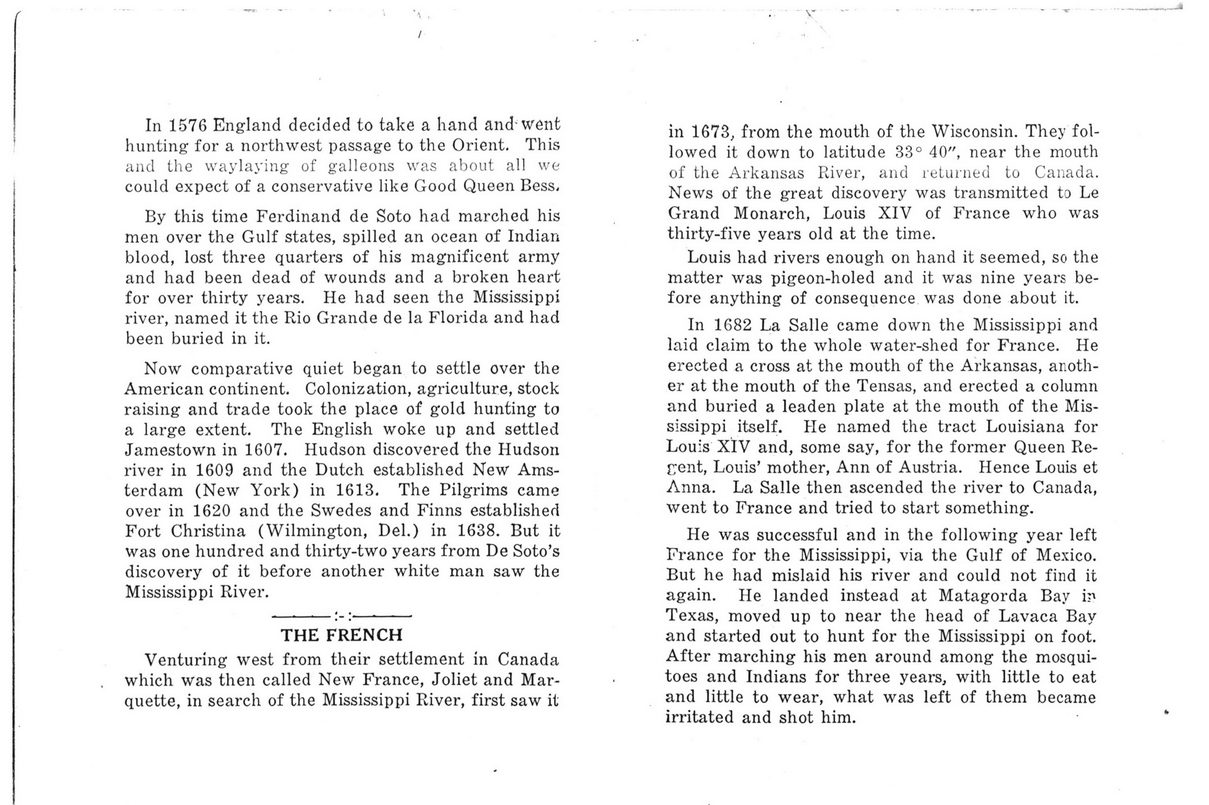This text was obtained via automated optical character recognition.
It has not been edited and may therefore contain several errors.
In 1576 England decided to take a hand and-went hunting for a northwest passage to the Orient. This and the waylaying of galleons was about all we could expect of a conservative like Good Queen Bess, By this time Ferdinand de Soto had marched his men over the Gulf states, spilled an ocean of Indian blood, lost three quarters of his magnificent army and had been dead of wounds and a broken heart for over thirty years. He had seen the Mississippi river, named it the Rio Grande de la Florida and had been buried in it. Now comparative quiet began to settle over the American continent. Colonization, agriculture, stock raising and trade took the place of gold hunting to a large extent. The English woke up and settled Jamestown in 1607. Hudson discovered the Hudson river in 1609 and the Dutch established New Amsterdam (New York) in 1613. The Pilgrims came over in 1620 and the Swedes and Finns established Fort Christina (Wilmington, Del.) in 1638. But it was one hundred and thirty-two years from De Soto’s discovery of it before another white man saw the Mississippi River. THE FRENCH Venturing west from their settlement in Canada which was then called New France, Joliet and Marquette, in search of the Mississippi River, first saw it in 1673, from the mouth of the Wisconsin. They followed it down to latitude 33° 40", near the mouth of the Arkansas River, and returned to Canada. News of the great discovery was transmitted to Le Grand Monarch, Louis XIV of France who was thirty-five years old at the time. Louis had rivers enough on hand it seemed, so the matter was pigeon-holed and it was nine years before anything of consequence was done about it. In 1682 La Salle came down the Mississippi and laid claim to the whole water-shed for France. He erected a cross at the mouth of the Arkansas, another at the mouth of the Tensas, and erected a column and buried a leaden plate at the mouth of the Mississippi itself. He named the tract Louisiana for Louis XIV and, some say, for the former Queen Recent, Louis’ mother, Ann of Austria. Hence Louis et Anna. La Salle then ascended the river to Canada, went to France and tried to start something. He was successful and in the following year left France for the Mississippi, via the Gulf of Mexico. But he had mislaid his river and could not find it again. He landed instead at Matagorda Bay ir> Texas, moved up to near the head of Lavaca Bay and started out to hunt for the Mississippi on foot. After marching his men around among the mosquitoes and Indians for three years, with little to eat and little to wear, what was left of them became irritated and shot him.

Biloxi Historical-Sketch---Bremer-(07)